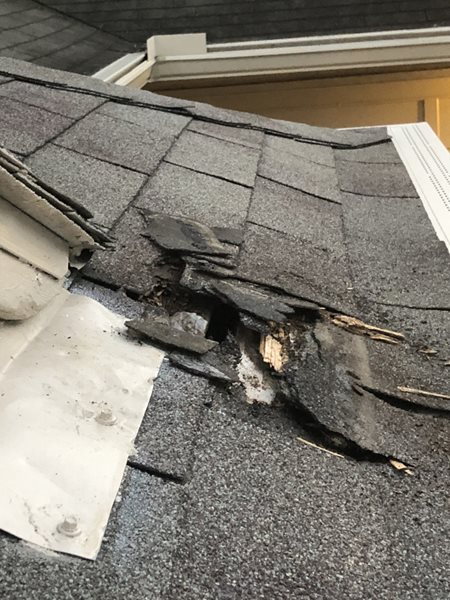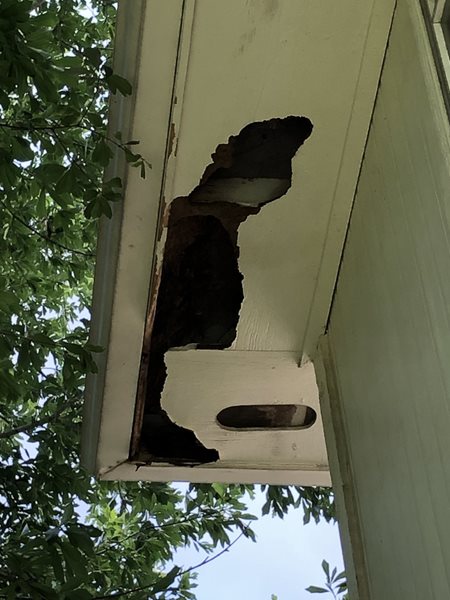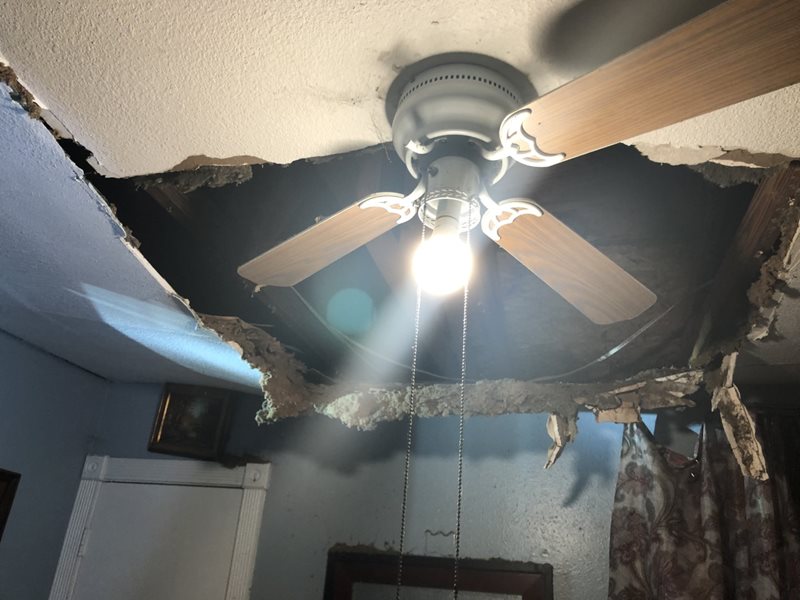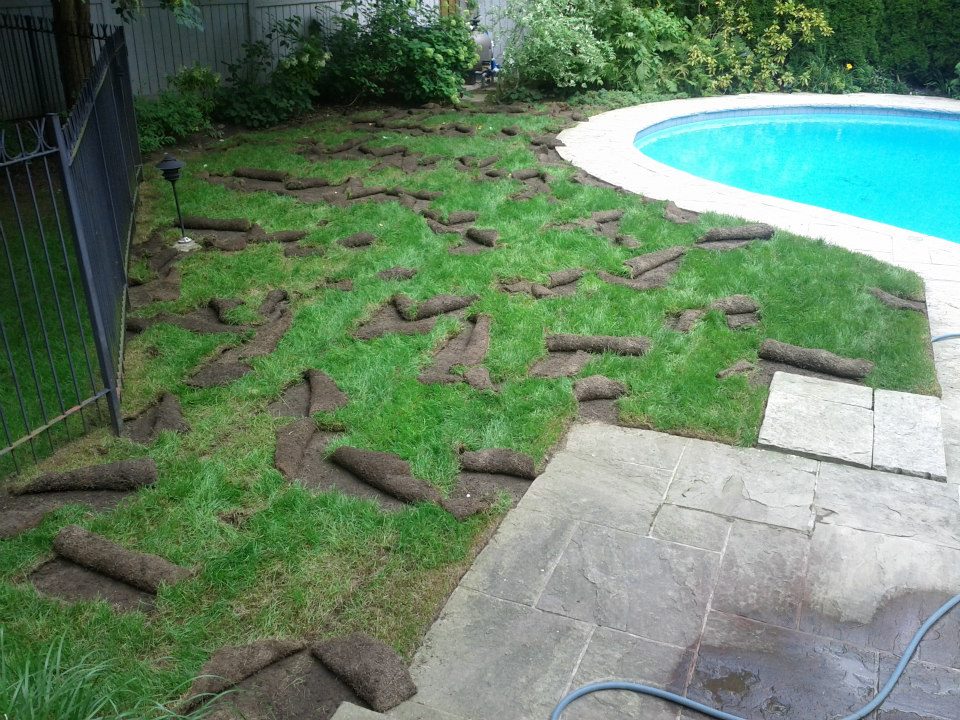Raccoon damage to yards, roofs, attics, and crawlspaces costs homeowners thousands of dollars in repairs every year (a standard homeowner’s insurance policy might cover the cost of repair but not trapping and removing. Contact your insurance company).
These critters are smart and constantly on the hunt for both food and shelter. Bird feeders, trash cans, and pet food will attract a raccoon to your property. Their agile paws allow them to tear into materials that would deter other animals, resulting in harm to property
Raccoon Damage in the House
Raccoons are fairly industrious when it comes to finding a way into your home. When possible, raccoons will exploit an existing hole. Despite the fairly large size of raccoons, the hole doesn’t have to be big. An adult raccoon can fit into a hole the size of a softball (3-4”).
In the worst-case scenario, a raccoon will create or expand holes, tear off roof shingles, or destroy vents. Raccoons are powerful creatures for their size, and they have tough paws and sharp claws to help bypass obstacles that other animals would have trouble with. Here are a few examples that Critter Control technicians have encountered in the field.
Despite protests from the homeowners, this raccoon was determined enough to tear through roof shingles and past insulation. Raccoons will go to extreme lengths to enter a house in certain circumstances, especially if kits are already in the attic. Without the proper raccoon-proof architecture, they will find a way inside the attic. Critter Control removes wildlife and repairs raccoon-damaged areas with the proper material necessary to keep raccoons out for good.
Vents are another common access point that is not protected by a thick wooden board. To ensure you are getting rid of raccoons for good, raccoon-proof materials are recommended for every potential access point even if damage has not yet occurred.
Here, a raccoon made its way into the house through the soffit. Soffit and fascia are common weak points that Raccoons exploit to make their way into the attic for denning.
Raccoon Damage in Attic
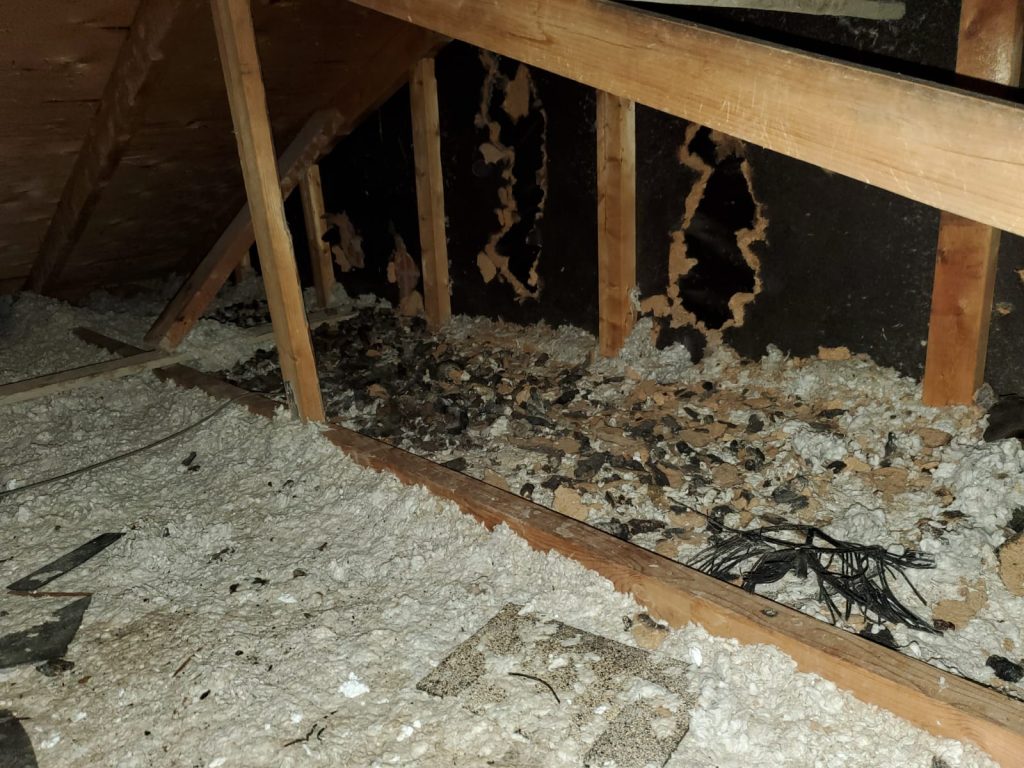
Raccoon Damage to Ceilings

Raccoons can weigh up to twenty pounds! This raccoon caused the ceiling to cave-in from within the attic. It feel into the living area of the house along with attic insulation and dust. Critter Control caught the raccoon with a catch pole.
Raccoon Latrine Sites
When they den in residential areas, raccoons create separate latrine sites. They consistently return to these locations, which are commonly found on roofs, in attics, woodpiles, haylofts, and on or under decks.
Their accumulated feces and urine quickly destroys insulation and saturates woodwork. Their feces spread raccoon roundworm, which is a serious health hazard for residents repairing raccoon damage to homes. In addition, fleas and ticks in raccoon fur can transfer to people or pets.Raccoon Nests
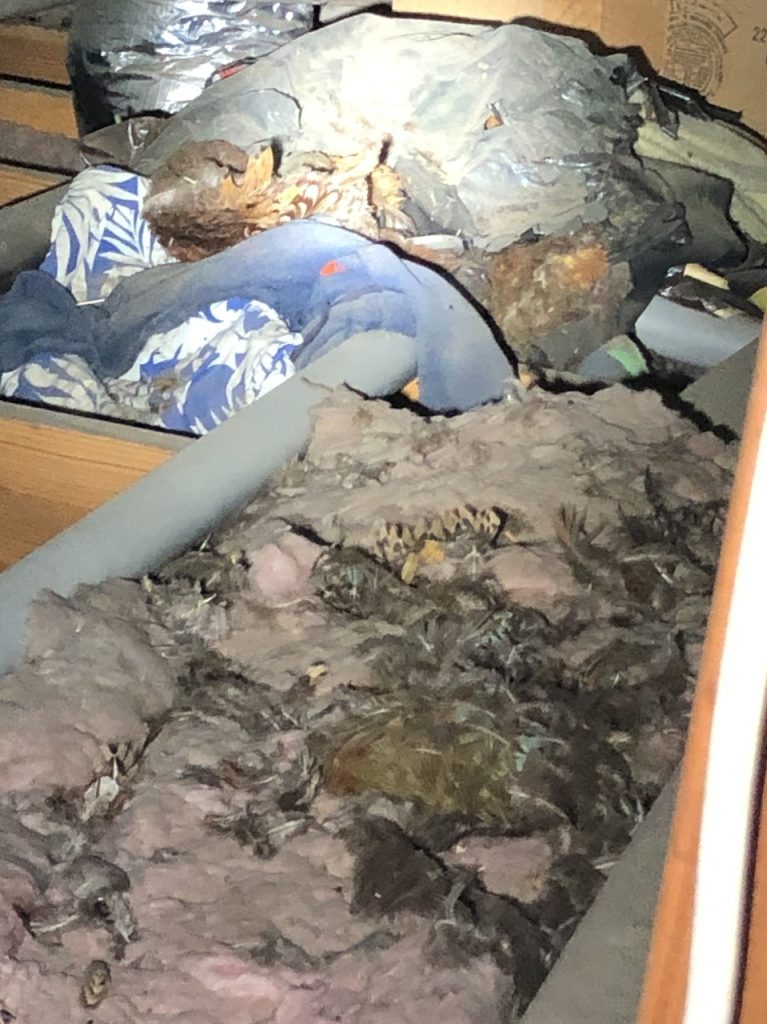
Raccoon Damage to Lawns
Grubs and earthworms are easy food sources, especially for young raccoons. From mid to late summer, homeowners may find holes and piles of sod scattered across the yard due to the pests’ nightly foraging. In addition to raccoon damage to lawns, the animals rip open trash cans and sift through the contents to find a meal.
Controlling Raccoons
Using scare tactics with raccoons will sometimes drive them away, but these methods don’t work when the animals become familiar with humans. Furthermore, excluding a mother raccoon from her nest may result in a litter of babies left inside a chimney or attic den.
Residents concerned about raccoon damage to the home, roof, or yard can contact Critter Control for humane and effective wildlife removal.
Learn more about raccoon removal.
Get them out.
Keep them out.®
Experiencing a wildlife or pest issue? We can help! Complete this form and your local Critter Control® office will contact you to assist.
- How to Get Rid of Raccoons
- Are Raccoons Dangerous?
- Raccoon Trapping Service
- Raccoon Control
- Baby Raccoons
- Dead Raccoon Removal
- Raccoon Diseases
- Do Raccoons Hibernate in Winter?
- Raccoon Diet
- Raccoon Poop
- Raccoons In Yards
- Raccoons in Basements
- Raccoons in Chimneys
- Raccoons in Crawl Spaces
- Raccoons in Houses
- Raccoons in Trash
- Raccoons in Trees
- Raccoons in Walls
- Raccoons on Roofs & in Soffits
- Raccoon Sounds
- Raccoon Tracks
- Raccoons in Attics & Ceilings
- What Does a Raccoon Look Like?



